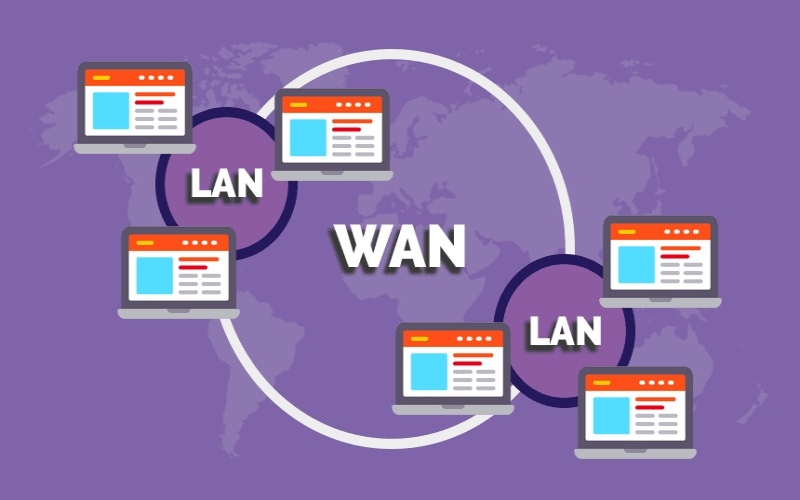Understanding how networks function in today’s interconnected environment is essential, especially the differences between Wide-Area Networks (WANs) and Local-Area Networks (LANs). What are the distinctions between these two types of networks? And how do each serve different needs? These questions are crucial for anyone looking to make informed decisions about their networking requirements.
This article will delve into what is WAN and LAN, highlighting key differences between them and how each plays a unique role in connecting devices and enabling communication across various distances.
What is a LAN?
A Local Area Network (LAN) typically covers a small geographical area, such as a single building, office, or campus. LANs facilitate communication between devices like computers, printers, and servers within a limited space. Due to their localised nature, LANs are known for their high speed and low latency.
LANs are commonly used in homes, schools, and small to medium-sized businesses. They are ideal for connecting devices that need to share resources like files, printers, or internet access. Because LANs operate over short distances, they generally require fewer resources and are easier to manage than more extensive networks.
What is WAN?
A Wide Area Network (WAN), on the other hand, spans a much larger geographical area. This type of network can cover cities, countries, or even continents. WANs connect multiple LANs, enabling communication between devices that are far apart. The internet is the most common example of a WAN, as it connects millions of networks across the globe.
WANs are essential for businesses that operate in multiple locations or need to connect remote offices. Due to the vast distances covered, WANs are more complex and typically involve various technologies, such as leased lines, satellite links, and public networks.
Key Differences Between WAN and LAN
Understanding the differences between WAN and LAN is crucial for determining which network type suits your needs. Here are some key distinctions:
1. Coverage Area
The most significant difference between WAN and LAN lies in their coverage area. A LAN is limited to a small geographical region, such as a building or campus. In contrast, a WAN covers a much larger area, often spanning cities, countries, or continents. This broader coverage makes WANs suitable for organisations with geographically dispersed operations.
2. Speed and Latency
LANs are known for their high-speed data transfer rates and low latency, making them ideal for real-time applications like video conferencing and online gaming. Since LANs cover smaller distances, the signal degradation is minimal, resulting in faster communication.
Due to the vast distances involved, WANs tend to have lower data transfer rates and higher latency. The signal must travel through multiple routers, switches, and sometimes undersea cables, leading to slower speeds and potential delays.
3. Cost and Maintenance
LANs are generally less expensive to set up and maintain. The hardware required for a LAN, such as switches and routers, is relatively affordable, and the network can often be managed by a small IT team or even an individual.
WANs, on the other hand, are more costly to establish and maintain. Connecting multiple LANs across vast distances requires advanced equipment, dedicated lines, and often third-party services. The complexity of managing a WAN typically demands a specialised IT team and ongoing investment in infrastructure.
4. Connectivity and Reliability
Due to their limited geographical scope, LANs offer reliable and stable connectivity. Since the network components are usually housed within a single location, issues can be quickly identified and resolved, ensuring minimal downtime.
WANs, however, can be prone to connectivity issues due to the complex infrastructure and multiple points of failure. The long distances and involvement of various service providers can lead to interruptions, making WANs less reliable than LANs in some cases.
Knowing what is WAN and how it differs from LAN allows businesses to choose the right network solution to support their operations. With the ongoing advancements in networking technology, staying informed about these differences will continue to be crucial for future success. Deciding between the two depends on your organisation’s specific requirements, including coverage area, speed, cost, and security.

